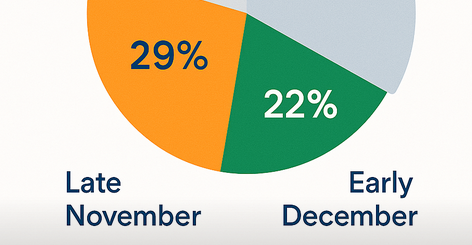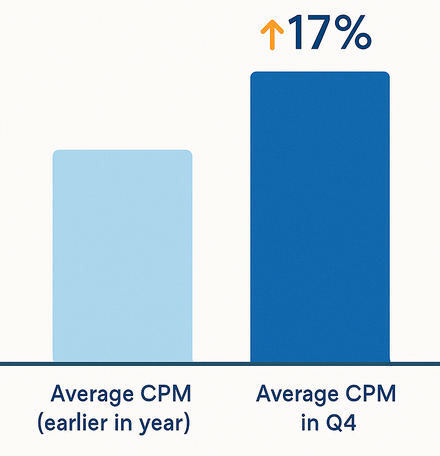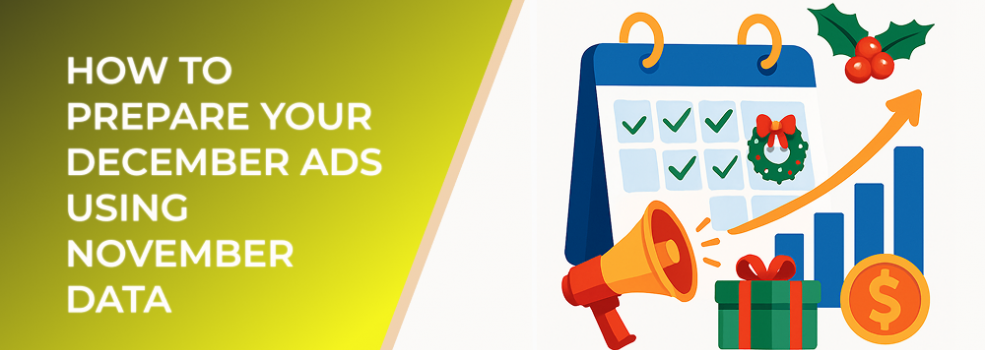December is one of the most competitive advertising months of the year. Costs rise, audiences behave differently, and performance often becomes less predictable. The strongest campaigns are built on a clear understanding of what November data reveals about user behavior, seasonality, and conversion pathways.
Below is a structured approach to using November insights to improve December results while keeping your targeting accurate and your budget disciplined.
1. Start With November Audience Performance
November provides a rich preview of December trends. By analyzing which audiences showed the highest engagement, click-through rates, and conversion intent, you can focus your December spend on segments with demonstrated interest.
Key areas to review include:
-
Audiences driving the lowest cost per result
-
Segments with the highest return visits or page engagements
-
Users engaging with holiday or promotional content
Useful statistic: In Q4, returning visitors are typically 70% more likely to convert than first-time visitors. This makes November-engaged users a prime starting point for December targeting.
2. Identify High-Intent Behavior Spikes
While November conversions may not always peak, intent often does. Track patterns such as:
-
Add-to-cart frequency growth
-
Product page view spikes
-
Content engagement surges

About 51% of holiday-season spending occurs in late November through early December
Useful statistic: Research shows that nearly 60% of holiday-season buyers begin researching products in November, even if they do not purchase until December.
These high-intent signals help determine where to increase December visibility and which users should receive retargeting ads.
3. Evaluate Creative Winners and Underperformers
Creative performance often shifts entering December. Use November to identify which formats and messages resonated with audiences.
Review:
-
Click-through rate by creative type
-
Scroll-stop rate on video vs static
-
Messaging themes that captured attention
-
Designs that produced the strongest engagement
Retire creative that underperformed and scale what showed momentum. December is not the month for experimentation with weak assets.
4. Reassess Budget Distribution
November data will reveal where December spend should shift. Increase budgets for:
-
High-intent audiences
-
Retargeting segments with strong November activity
-
Best-performing creative sets
Decrease spend for:
-
Audiences with high impression costs and low engagement
-
Low-quality traffic sources
-
Creative assets with below-average click-through rates

Average CPMs increase by roughly 17% in Q4 compared to earlier in the year
Useful statistic: Advertisers often see 20–30% higher CPMs in early December, making it essential to invest only in proven, efficient segments.
5. Strengthen Your Retargeting Layers
November behavior gives you a warm audience base for December retargeting. This includes:
-
Users who added items to cart but didn’t complete
-
Users who visited key landing pages
-
Users who interacted with your content or ads
Build retargeting layers that move users through:
-
High-intent reminders
-
Offer-based messaging
-
Final push campaigns during peak shopping days
6. Refine Messaging for December Mindsets
People buy differently in December. Use your November learnings to sharpen:
-
Urgency messaging
-
Gift-oriented product positioning
-
Seasonal benefits or value statements
Test shorter, clearer call-to-actions. November is exploratory, but December is decision-driven.
7. Use November Cost Patterns to Forecast December Spend
If you track rising CPMs and CPCs throughout November, you can better forecast December competition.
Use these signals to:
-
Set maximum bids
-
Plan budget pacing
-
Anticipate when competition will likely spike
Useful statistic: Historically, CPCs rise up to 25% between late November and early December, especially in retail-focused campaigns.

